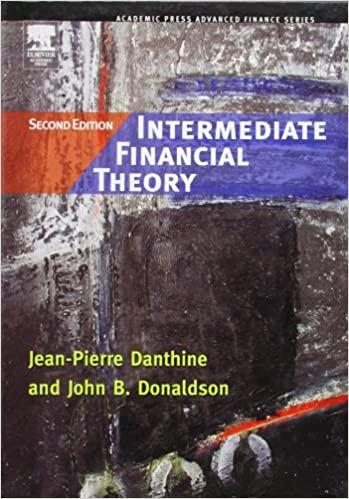a.) A pension fund manager is considering three mutual funds. The first is a stock fund, the second is a long-term government and corporate bond fund, and the third is a T-bill money market fund that yields a rate of 5%. The probability distribution of the risky funds is as follows:
| The correlation between the fund returns is 0.12. |
| You require that your portfolio yield an expected return of 12%, and that it be efficient, on the best feasible CAL. |
| a. | What is the standard deviation of your portfolio? (Round your answer to 2 decimal places. Omit the "%" sign in your response.) |
| b. | What is the proportion invested in the T-bill fund and each of the two risky funds? (Round your answers to 2 decimal places.Omit the "%" sign in your response.) |
| | Proportion Invested |
| T-bill fund | | % | |
| Stocks | | % | |
| Bonds | | % | |
| b.) A pension fund manager is considering three mutual funds. The first is a stock fund, the second is a long-term government and corporate bond fund, and the third is a T-bill money market fund that yields a rate of 8%. The probability distribution of the risky funds is as follows: | | Expected Return | Standard Deviation | | Stock fund (S) | 17% | 38% | | Bond fund (B) | 13 | 18 | | The correlation between the fund returns is 0.12. | | | a-1. | What are the investment proportions in the minimum-variance portfolio of the two risky funds. (Do not round intermediate calculations. Enter your answers as decimals rounded to 4 places. | | | | | Portfolio invested in the stock | | | Portfolio invested in the bond | | | | | | What is the expected value and standard deviation of its rate of return? (Do not round intermediate calculations. Enter your answers as decimals rounded to 4 places.) | | | Rate of Return | | Expected return | | | Standard deviation | | |






